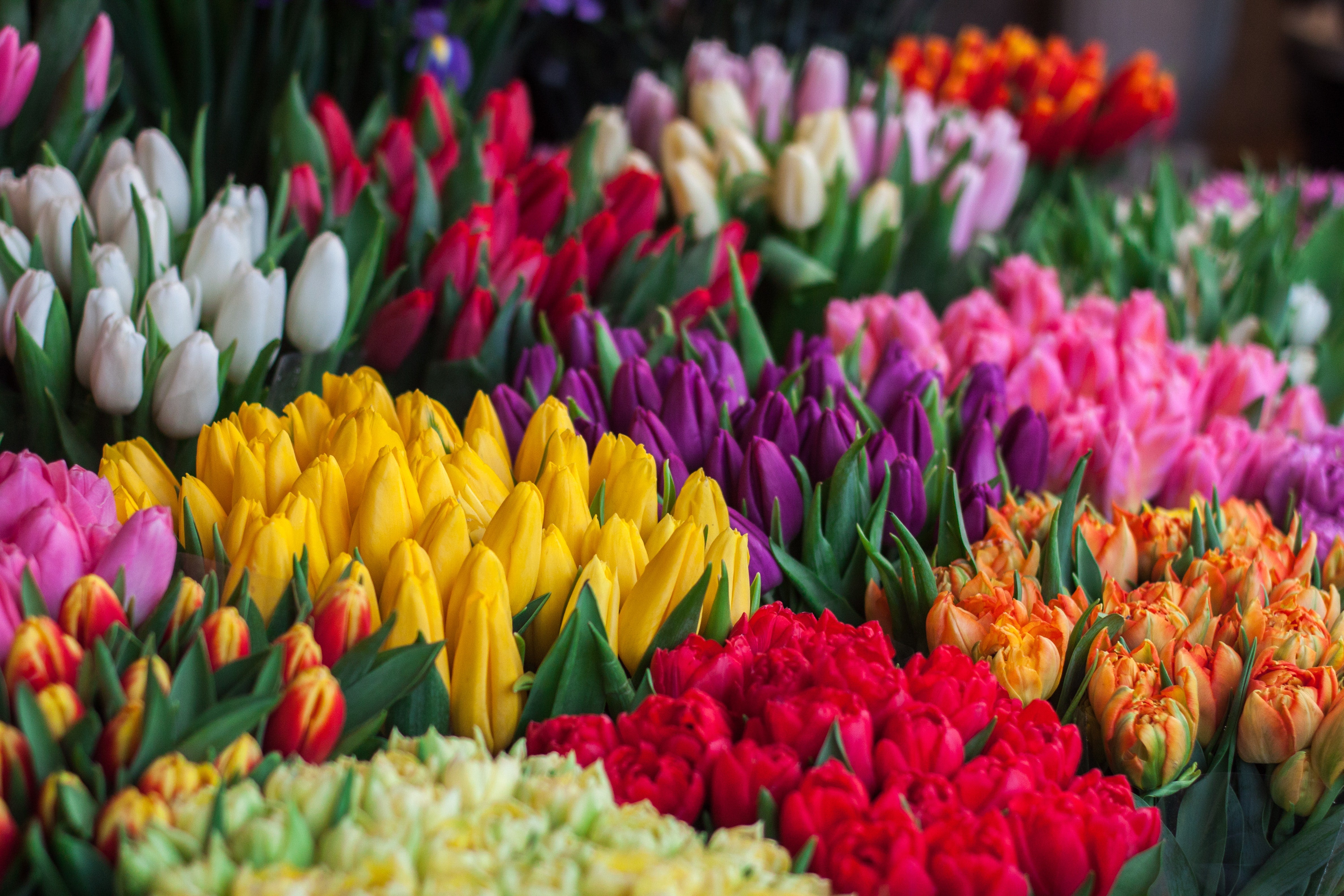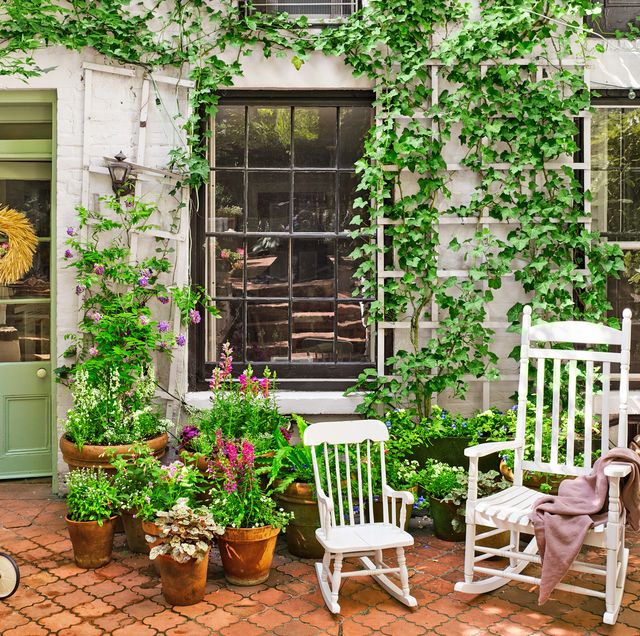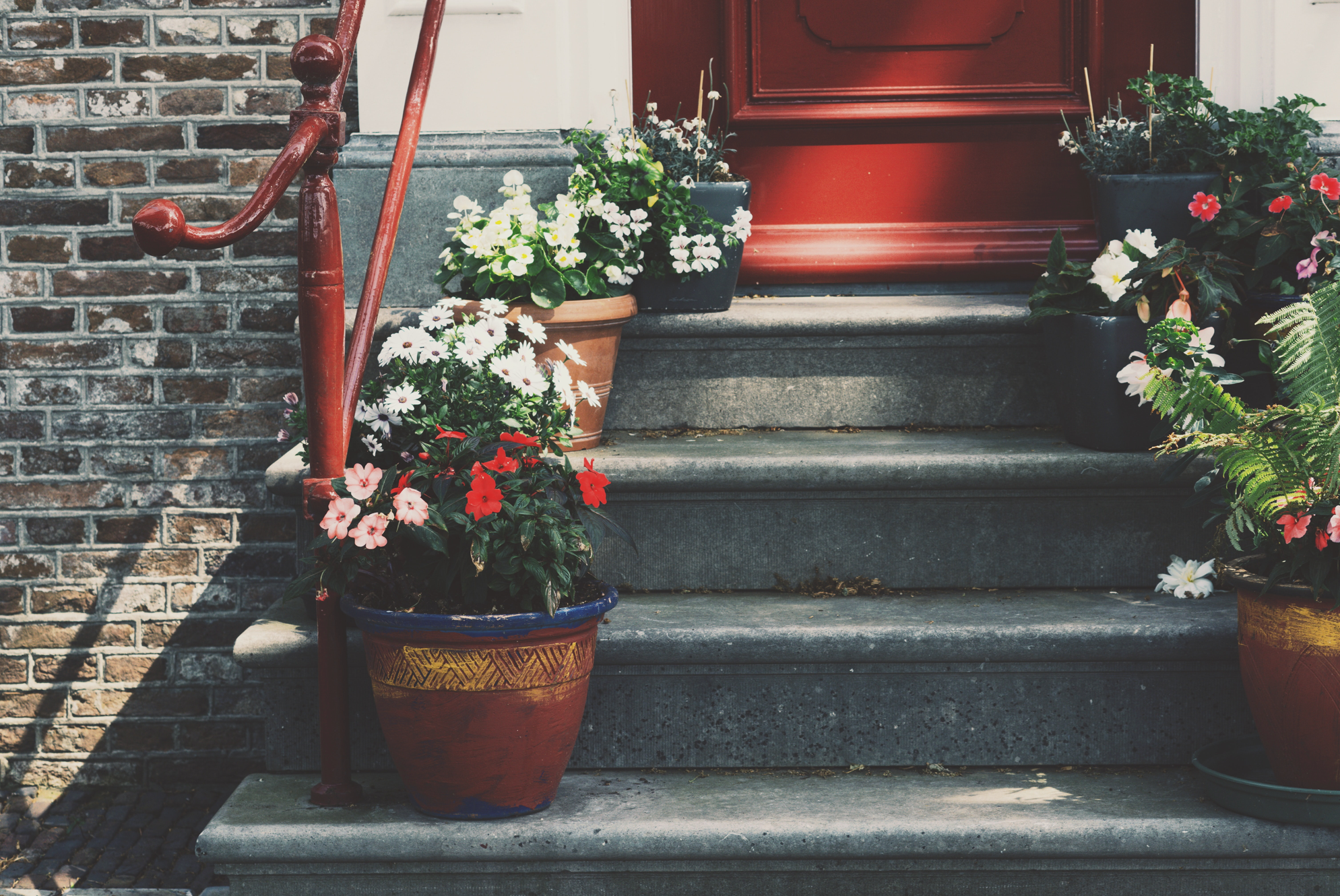
A brief history of tulips
The tulip is a flowering plant of the family Liliaceae. It is native to the region known as Eurasia, which includes Europe and Asia.
Tulips were among the first flowers to be grown in Europe and North America, at some point after 1563. Tulips were introduced to cultures throughout Europe and Asia, and eventually to North America. The tulip was an expensive gift in the 17th century and is often mentioned in works of art. At first, the bulbs of tulips were dug as a wildflower or scattered along roadsides for pleasure and decoration.
The word "tulip" comes from Turkic tulga, from old Persian tūlān-, "tulān", from ancient Turkish tulgar. The word "tulip" is also possibly derived from the name of a pre-Islamic god, Tulapha, who was worshipped by Central Asian Turkic tribes. Another word used in Asia as an alternative name for tulips is the Persian word zāl. The word "zāl" means "colorful".
The tulip's vividly coloured petals are borne on stems above foliage that remain green throughout Winter, through to Spring when the ground begins to thaw and fresh grass shoots appear. Depending on the species of tulip, its blooming season can be late March or early May in northern Europe and late April or mid-June in North America. The flower of the tulip is found in many colours, including red, yellow, orange and white; the most common being a blend of two or three colours.
In April 1637, almost 200 years before the role of the tulip as a status symbol was appreciated, botanists who had seen tulips growing in Turkey sent bulbs and seeds to their friends in Europe. The first recorded shipment of bulbs was to the Netherlands on a trading ship that set sail from Istanbul on 10 August 1637. Tulips were introduced into France during this decade by Pierre de Ronsard's gardener.
The French most likely introduced them to North America at Plymouth in 1621 because the tulip is a symbol of the Dutch Republic and they associated it with the Dutch. Tulips arrived in England in 1634 and soon were cultivated in greenhouses as a curiosity. Tulips were kept for their beauty and have always been grown from bulbs, never from seeds. The bulbs are extremely susceptible to frost damage and must be lifted before freezing weather occurs. Before they can be replanted, tulips must spend about six weeks outdoors after lifting to allow them to acclimatize.
Tulips are now widely grown across many countries in southern Africa- mostly in South Africa or Lesotho. Tulips are often used for ornamental purposes around public buildings and homes during the winter months when they are not usually expected to bloom - creating a "false spring". Due to their vivid colouring, tulips are sometimes regarded as symbols of love or peace.
In terms of popularity, the tulip is said to be the No.1 flower in the Netherlands. It is also commonly grown as an ornamental plant in warmer areas like South Africa and South America, where they flower during winter and are used as indoor plants during other seasons.
Very large specimens of Tulips grow in some areas of southern Spain, particularly Andalusia where they are used for street decorations. The tulip is also popular among florists throughout Europe and North America for its exotic appearance and bright colours, especially when grown for cut flowers for special occasions such as weddings or as seasonal decorations for home borders or window boxes.
There is a wide variety of species of tulips. The most notable is "Tulipa gesneriana", the common garden tulip, and "Tulipa sylvestris", the wild tulip.
In 2008, Martin Haar was one of the first to use large-scale gene-sequencing technologies to identify a new species of tulip – not from Turkey or Eastern Europe but from Virginia. This species of Tulip is a form of the common Dutch tulip "Tulipa aborescens".
Nowadays tulips can be found in many different varieties and sizes. There is the traditional "double" tulip with its distinctive corona, which blows out at the top to create a frilly effect. However, there are also single-flowering and dwarf varieties as well as the floral tulip tazetta, with a distinctive concentric ring pattern offsetting the inner petals of its bloom.
In the Netherlands, tulips are planted in rectangular beds called “borders” along canals or in parks. The blooming period lasts for about two weeks when many tourists visit these sites because of their natural beauty and amazing colours.
Let us know if you love tulips as much as we do and if you have any growing in your garden.
Tulips were among the first flowers to be grown in Europe and North America, at some point after 1563. Tulips were introduced to cultures throughout Europe and Asia, and eventually to North America. The tulip was an expensive gift in the 17th century and is often mentioned in works of art. At first, the bulbs of tulips were dug as a wildflower or scattered along roadsides for pleasure and decoration.
The word "tulip" comes from Turkic tulga, from old Persian tūlān-, "tulān", from ancient Turkish tulgar. The word "tulip" is also possibly derived from the name of a pre-Islamic god, Tulapha, who was worshipped by Central Asian Turkic tribes. Another word used in Asia as an alternative name for tulips is the Persian word zāl. The word "zāl" means "colorful".
The tulip's vividly coloured petals are borne on stems above foliage that remain green throughout Winter, through to Spring when the ground begins to thaw and fresh grass shoots appear. Depending on the species of tulip, its blooming season can be late March or early May in northern Europe and late April or mid-June in North America. The flower of the tulip is found in many colours, including red, yellow, orange and white; the most common being a blend of two or three colours.
In April 1637, almost 200 years before the role of the tulip as a status symbol was appreciated, botanists who had seen tulips growing in Turkey sent bulbs and seeds to their friends in Europe. The first recorded shipment of bulbs was to the Netherlands on a trading ship that set sail from Istanbul on 10 August 1637. Tulips were introduced into France during this decade by Pierre de Ronsard's gardener.
The French most likely introduced them to North America at Plymouth in 1621 because the tulip is a symbol of the Dutch Republic and they associated it with the Dutch. Tulips arrived in England in 1634 and soon were cultivated in greenhouses as a curiosity. Tulips were kept for their beauty and have always been grown from bulbs, never from seeds. The bulbs are extremely susceptible to frost damage and must be lifted before freezing weather occurs. Before they can be replanted, tulips must spend about six weeks outdoors after lifting to allow them to acclimatize.
Tulips are now widely grown across many countries in southern Africa- mostly in South Africa or Lesotho. Tulips are often used for ornamental purposes around public buildings and homes during the winter months when they are not usually expected to bloom - creating a "false spring". Due to their vivid colouring, tulips are sometimes regarded as symbols of love or peace.
In terms of popularity, the tulip is said to be the No.1 flower in the Netherlands. It is also commonly grown as an ornamental plant in warmer areas like South Africa and South America, where they flower during winter and are used as indoor plants during other seasons.
Very large specimens of Tulips grow in some areas of southern Spain, particularly Andalusia where they are used for street decorations. The tulip is also popular among florists throughout Europe and North America for its exotic appearance and bright colours, especially when grown for cut flowers for special occasions such as weddings or as seasonal decorations for home borders or window boxes.
There is a wide variety of species of tulips. The most notable is "Tulipa gesneriana", the common garden tulip, and "Tulipa sylvestris", the wild tulip.
In 2008, Martin Haar was one of the first to use large-scale gene-sequencing technologies to identify a new species of tulip – not from Turkey or Eastern Europe but from Virginia. This species of Tulip is a form of the common Dutch tulip "Tulipa aborescens".
Nowadays tulips can be found in many different varieties and sizes. There is the traditional "double" tulip with its distinctive corona, which blows out at the top to create a frilly effect. However, there are also single-flowering and dwarf varieties as well as the floral tulip tazetta, with a distinctive concentric ring pattern offsetting the inner petals of its bloom.
In the Netherlands, tulips are planted in rectangular beds called “borders” along canals or in parks. The blooming period lasts for about two weeks when many tourists visit these sites because of their natural beauty and amazing colours.
Let us know if you love tulips as much as we do and if you have any growing in your garden.




Leave a comment
This site is protected by hCaptcha and the hCaptcha Privacy Policy and Terms of Service apply.